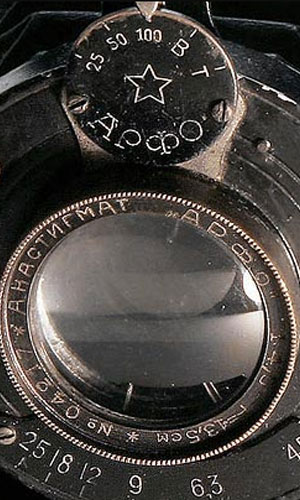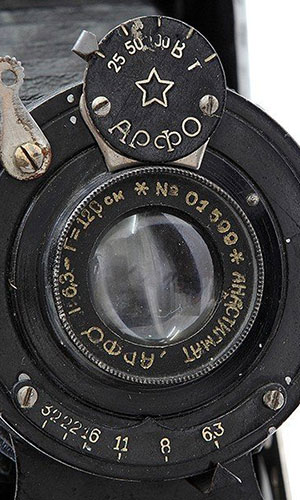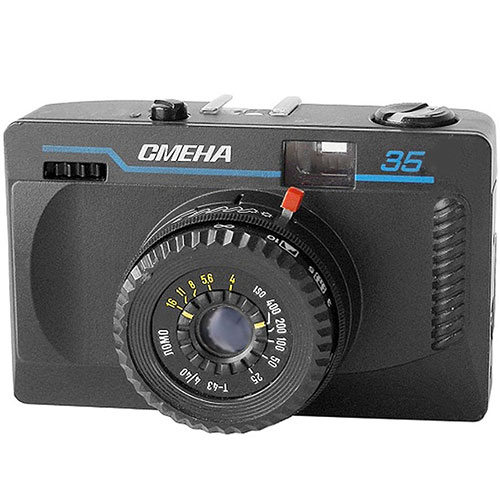Komsomolets (ARFO)
Komsomolets is a camera similar to ARFO-4. It was equipped with a 6.3/120 lens and a shutter with speeds of 1/25, 1/50, 1/100, B, and T.

Komsomolets (ARFO) is a simpler version of the ARFO-4 camera. This folding camera was equipped with a 6.3 / 120 lens (according to another version – there was also a variation 6.3 / 105) and a shutter with speeds of 1/25, 1/50, 1/100, B, and T (for focusing with ground glass).
Komsomolets Specifications
- Type: 6.5×9 folding camera
- Manufacturer: Foto-Trud
- Production period: from 1936 to 1940
- Format: 6.5×9
- Lens mount: fixed lens
- Lens: ARFO anastigmat f4.5/135
- Shutter: leaf shutter with speeds of 1/25, 1/50 and 1/100 sec. plus B and T
- Viewfinder: ground glass
- Lighmeter: none
- Flash synchronisation: none
- Selftimer: none
- Weight: 1000 grams
The camera has a format of 6.5×9 cm and is intended for beginners. In the Komsomolets camera, the lens stand is greatly simplified, the frame viewfinder is entirely located on the rear standard of the body.



As we said earlier, constructive simplification of ARFO-4 was carried out with the aim of producing a cheaper camera designed for the mass consumer.
Although the camera is simple, the quality is not worse than in previous versions, that is, ARFO-4 and earlier. These cameras are also quite difficult to find in online stores in good condition and at an affordable price.

Komsomolets camera creates very classic photographs in its atmosphere. This is facilitated by the triplet lens, created back in the 19th century, as well as the large frame format.
Like all cameras of the early USSR, this camera can be of interest to collectors, because every year it becomes more and more difficult to find such cameras in good condition, and the prices of old Soviet cameras (as well as any film cameras) continue to grow.
In addition, ARFO-4 may be interesting for photographers who want to try to achieve a unique classic look in their works. As mentioned above, the large format and classic lens design will create a unique atmosphere in your photos, and make them look like the work of photographers of the early 20th century.







